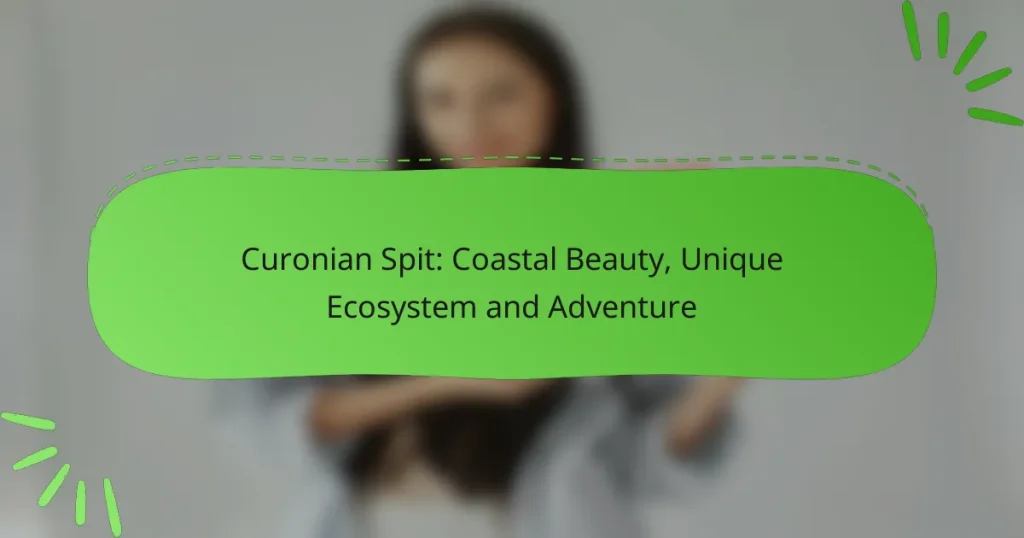
Curonian Spit: Coastal Beauty, Unique Ecosystem and Adventure
The Curonian Spit is a breathtaking coastal destination renowned for its stunning landscapes and unique…
Lithuania is a captivating destination that combines rich history, vibrant culture, and stunning natural landscapes. From the charming streets of Vilnius Old Town to the enchanting Trakai Castle and the serene Curonian Spit, each location offers a unique glimpse into the country's heritage. To truly experience Lithuania, indulge in its traditional cuisine, folk music, and thriving art scene, which reflect the nation's identity and spirit.

The Curonian Spit is a breathtaking coastal destination renowned for its stunning landscapes and unique ecosystem, featuring distinctive sand dunes and rich biodiversity. This narrow strip of land between the Baltic Sea and the Curonian Lagoon invites nature lovers and adventure seekers to explore its diverse habitats, engage in thrilling activities, and experience the charm…
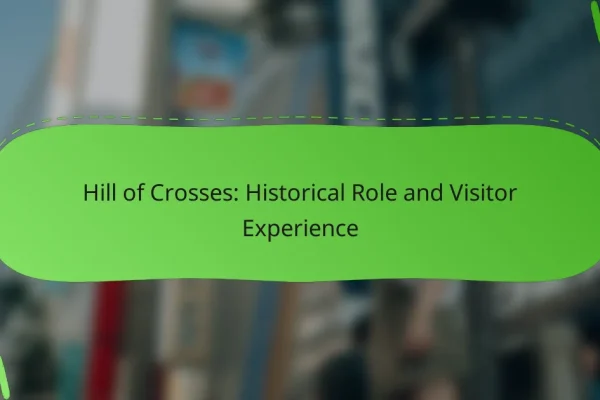
The Hill of Crosses in Lithuania stands as a profound symbol of faith and national identity, reflecting the resilience of its people against oppression. This site not only serves as a pilgrimage destination but also embodies the enduring spirit of resistance throughout history. Visitors can engage with the site through guided tours or self-exploration, gaining…
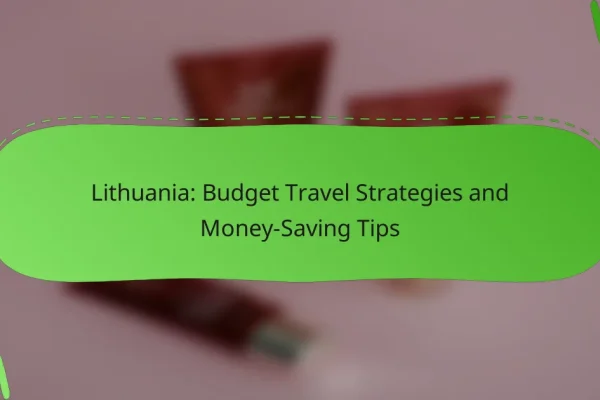
Traveling on a budget in Lithuania is both feasible and rewarding with the right strategies in place. By choosing affordable accommodations, dining at local eateries, and taking advantage of special offers, you can immerse yourself in the country’s rich culture while keeping your expenses in check. With careful planning, you can enjoy Lithuania’s stunning landscapes…
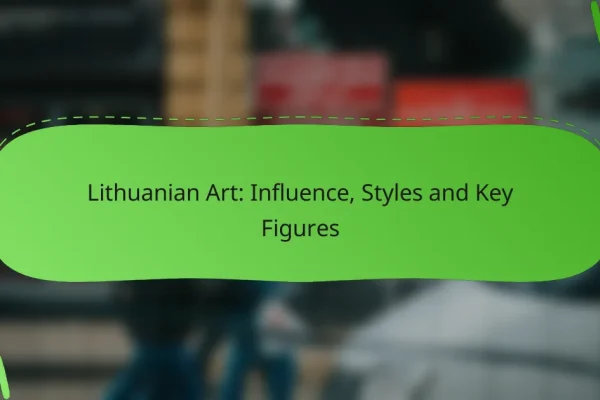
Lithuanian art is a vibrant fusion of local traditions and European influences, significantly impacting global art movements. Its diverse styles, from folk art to modernism, reflect the country’s rich cultural heritage and historical evolution. Key figures like Mikalojus Konstantinas Čiurlionis and Vytautas Kasiulis have played pivotal roles in shaping Lithuania’s artistic landscape, leaving a lasting…
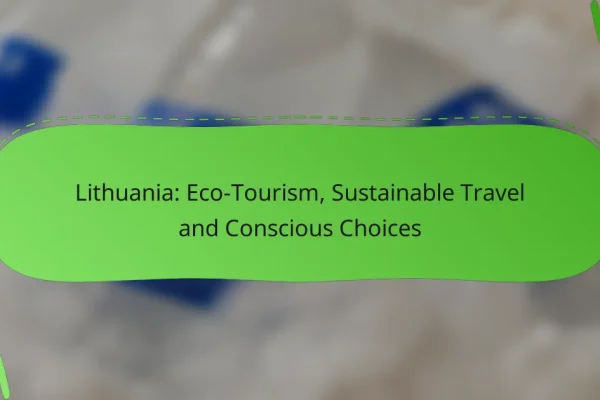
Discover the beauty of Lithuania through eco-tourism, where sustainable travel practices allow you to connect with nature while supporting local communities. By making conscious choices, such as opting for green accommodations and engaging with local artisans, you can enjoy authentic experiences that benefit both the environment and the culture. Embrace a travel style that prioritizes…
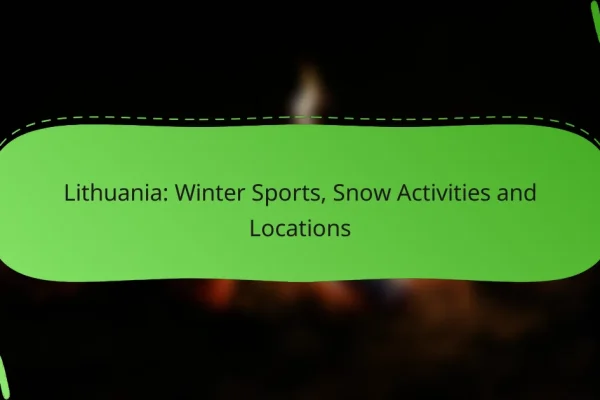
Lithuania is a winter wonderland for sports enthusiasts, offering a diverse range of activities such as skiing, snowboarding, and ice skating. With popular destinations like Druskininkai and Ignalina, visitors can find excellent facilities and picturesque landscapes tailored to all skill levels. Beyond traditional sports, the country also invites adventurers to partake in snowshoeing, winter hiking,…
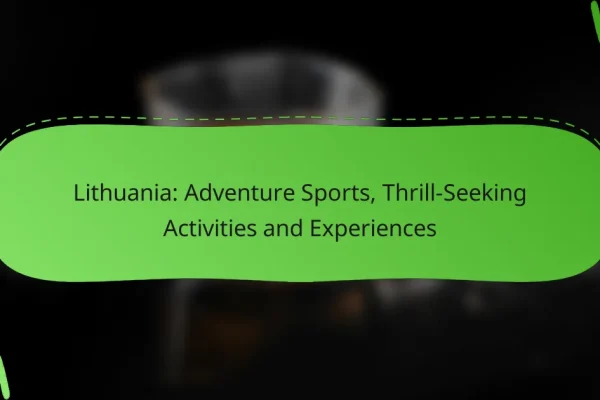
Lithuania is a hidden gem for adventure sports enthusiasts, offering an array of thrilling activities that promise excitement and breathtaking views. From bungee jumping and zip-lining to kayaking and skydiving, there are countless ways to experience the country’s stunning landscapes while satisfying your adrenaline cravings. Whether you’re a seasoned thrill-seeker or a newcomer to adventure…

Lithuanian desserts are a delightful reflection of the country’s rich culinary heritage, showcasing unique ingredients and traditional preparation methods. From the iconic Šakotis to comforting puddings and cold soups, these sweet treats offer a taste of Lithuania’s cultural history. In cities like Vilnius, Klaipėda, and Kaunas, local bakeries present a variety of these beloved desserts,…
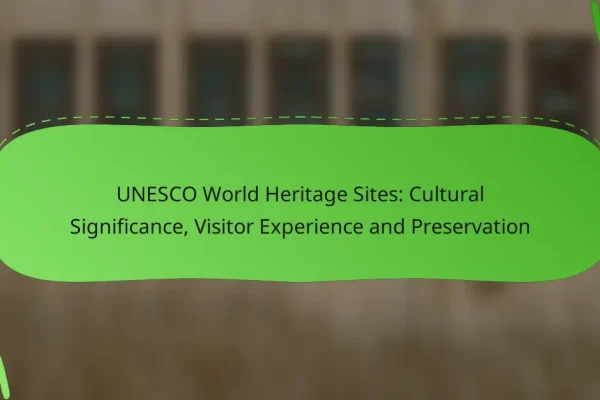
UNESCO World Heritage Sites play a crucial role in preserving cultural identity and historical narratives, fostering a sense of belonging within communities. These sites not only provide enriching visitor experiences through educational tours and local events but also face significant preservation challenges, such as climate change and overtourism, that threaten their integrity for future generations….

Vilnius, the capital of Lithuania, is a treasure trove of historical and cultural landmarks that first-time visitors should not miss. From the enchanting Old Town to the iconic Gediminas Tower and the stunning St. Anne’s Church, each site offers a unique glimpse into the city’s rich heritage and architectural splendor. What are the must-see landmarks…
Lithuania boasts a rich tapestry of attractions that showcase its history, culture, and natural beauty. Key sites include the historic Vilnius Old Town, the picturesque Trakai Castle, and the unique Curonian Spit, each offering a distinct experience for visitors.
Vilnius Old Town is a UNESCO World Heritage site known for its stunning architecture and vibrant atmosphere. Visitors can explore cobblestone streets lined with baroque churches, quaint cafes, and local shops. Key highlights include the Cathedral Square, Gediminas Tower, and the Gates of Dawn.
When visiting, consider taking a guided walking tour to fully appreciate the historical significance and stories behind the landmarks. The area is also a hub for cultural events, making it worthwhile to check local calendars for festivals or exhibitions during your stay.
Trakai Castle, located on an island in Lake Galvė, is one of Lithuania's most iconic landmarks. This medieval fortress offers breathtaking views and a glimpse into the country’s history as a former royal residence. The castle is accessible by a short drive or a scenic boat ride from the nearby town of Trakai.
Visitors can explore the castle's museum, which showcases artifacts from the Grand Duchy of Lithuania. To enhance your experience, consider visiting during the summer months when the surrounding area hosts various cultural events and reenactments.
The Kernavė Archaeological Site is a significant historical area that reflects Lithuania's early civilization. Recognized as a UNESCO World Heritage site, it features ancient mounds and remnants of settlements dating back thousands of years. The site provides insight into the lives of the early inhabitants of the region.
While exploring, take time to visit the Kernavė Museum, which offers educational exhibits about the archaeological findings. Plan your visit during the warmer months for guided tours that delve deeper into the site's history and significance.
The Curonian Spit is a unique natural wonder that stretches between Lithuania and Russia, characterized by its stunning sand dunes and diverse ecosystems. This UNESCO World Heritage site is perfect for outdoor enthusiasts, offering opportunities for hiking, birdwatching, and beach activities.
To fully enjoy the area, consider renting a bike to explore the scenic trails or taking a boat tour to appreciate the coastline from the water. Be mindful of local regulations regarding conservation efforts to protect this fragile environment.
The Hill of Crosses is a pilgrimage site near Šiauliai, famous for its thousands of crosses placed by visitors over the years. This powerful symbol of faith and resilience attracts both locals and tourists, making it a must-visit for those interested in Lithuania's spiritual heritage.
When visiting, take time to reflect on the significance of the site and the stories behind the crosses. It’s advisable to visit early in the morning or late afternoon to avoid crowds and experience the serene atmosphere.
To fully appreciate Lithuania's rich heritage, immerse yourself in its traditional cuisine, folk music, and vibrant art scene. Each of these cultural experiences offers a unique glimpse into the country's history and identity.
Traditional Lithuanian cuisine is hearty and flavorful, often featuring ingredients like potatoes, rye, and various meats. Popular dishes include cepelinai (potato dumplings filled with meat) and šaltibarščiai (cold beet soup), which reflect the agricultural roots of the country.
When dining in Lithuania, consider visiting local eateries or markets to experience authentic flavors. Pair your meal with a glass of kvass, a fermented beverage made from rye bread, or a local beer to enhance your culinary journey.
Folk music and dance are integral to Lithuanian culture, often performed during festivals and community gatherings. Traditional instruments like the kanklės (a type of zither) and the birbynė (a woodwind instrument) create distinctive sounds that accompany lively dances.
Participating in or observing folk dances can be a memorable experience. Look for events during summer festivals, where you can join in the fun and learn traditional steps, fostering a deeper connection to Lithuanian heritage.
Vilnius boasts a vibrant art scene, with numerous galleries showcasing both contemporary and traditional works. Notable venues include the Contemporary Art Centre and the National Gallery of Art, which feature local and international artists.
When visiting these galleries, take the time to explore various exhibitions and installations. Many galleries also host workshops and events, providing opportunities to engage with the art community and gain insights into Lithuanian artistic expression.
Planning a trip to Lithuania involves understanding the best times to visit, creating a travel itinerary, and knowing your transportation options. Consider your interests, budget, and the experiences you want to have while exploring this beautiful Baltic country.
The ideal time to visit Lithuania is during the late spring to early autumn months, specifically from May to September. During this period, the weather is generally warm, and many cultural events and festivals take place.
However, if you prefer fewer crowds and lower prices, consider visiting in the shoulder seasons of late April or early October. Winter months can be cold, but they offer a unique charm, especially around Christmas when markets and festivities abound.
A well-structured travel itinerary for Lithuania can enhance your experience. A typical 5-day itinerary might include two days in Vilnius, one day in Kaunas, and two days exploring the coastal city of Klaipėda and the Curonian Spit.
For a more immersive experience, consider adding a day trip to Trakai Castle or the picturesque town of Nida. Tailor your itinerary based on your interests, whether they are historical sites, nature, or local cuisine.
Getting around Lithuania is relatively easy, with various transportation options available. Buses and trains connect major cities, and they are both affordable and efficient. For example, a bus ride from Vilnius to Kaunas typically takes about 2 hours.
If you prefer flexibility, consider renting a car, which allows you to explore rural areas and hidden gems at your own pace. Additionally, public transportation in cities like Vilnius is convenient, with trams and buses covering most areas.
Lithuania hosts a variety of vibrant festivals and events throughout the year, celebrating its rich culture and traditions. These gatherings offer a unique glimpse into Lithuanian heritage, featuring music, dance, food, and local crafts.
The Užgavėnės Festival marks the end of winter and the beginning of Lent, celebrated with lively parades, traditional masks, and delicious food. Held in February or early March, this event features a variety of activities, including folk music, dancing, and the famous pancake feast.
During the festival, participants often wear elaborate costumes and masks, symbolizing the expulsion of winter. The highlight is the burning of a straw effigy, known as "Morė," which represents winter, making way for spring.
The Vilnius Christmas Market is a festive gathering that transforms the capital into a winter wonderland from late November to early January. Visitors can enjoy local crafts, traditional foods, and seasonal treats, all set against the backdrop of the beautifully lit Old Town.
This market features a variety of stalls selling handmade gifts, ornaments, and local delicacies like gingerbread and mulled wine. It’s a perfect place to experience the holiday spirit and find unique souvenirs.
Held in late July, the Sea Festival in Klaipėda celebrates the city’s maritime heritage with a weekend of activities along the Baltic Sea. The event includes concerts, exhibitions, and various competitions, attracting both locals and tourists.
Visitors can enjoy boat rides, seafood tastings, and cultural performances, making it a lively celebration of the region's connection to the sea. The festival also features a grand fireworks display, adding to the festive atmosphere.
The best accommodations in Lithuania range from luxurious hotels to charming guesthouses and unique stays, catering to various preferences and budgets. Whether you are in the capital city of Vilnius or exploring picturesque towns like Trakai and Nida, there are options that provide comfort and a taste of local culture.
Vilnius offers a variety of hotels that suit different tastes and budgets. High-end options like the Kempinski Hotel Cathedral Square provide luxurious amenities and stunning views of the city. For mid-range travelers, hotels such as the Radisson Blu offer comfortable stays with convenient locations.
When choosing a hotel in Vilnius, consider proximity to major attractions like the Old Town and the Gediminas Tower. Booking in advance can often secure better rates, especially during peak tourist seasons.
Trakai is known for its beautiful lakes and historic castle, making it a popular spot for visitors. Guesthouses in this area, such as the Karaites Guesthouse, offer a cozy atmosphere and often include local cuisine in their offerings. Prices typically range from affordable to mid-range, making them accessible for most travelers.
When selecting a guesthouse in Trakai, look for options that provide easy access to the lakes and the castle. Many guesthouses also offer activities like kayaking or guided tours, enhancing your stay.
Nida, located on the Curonian Spit, is famous for its stunning natural landscapes and unique accommodations. Options like wooden cottages or eco-friendly lodges provide a distinctive experience, often blending seamlessly with the environment. Prices can vary, but expect to pay a premium during the summer months.
For a memorable experience in Nida, consider booking a stay that includes local activities such as cycling or bird watching. Unique stays often provide insights into the local culture and nature, making your visit even more enriching.